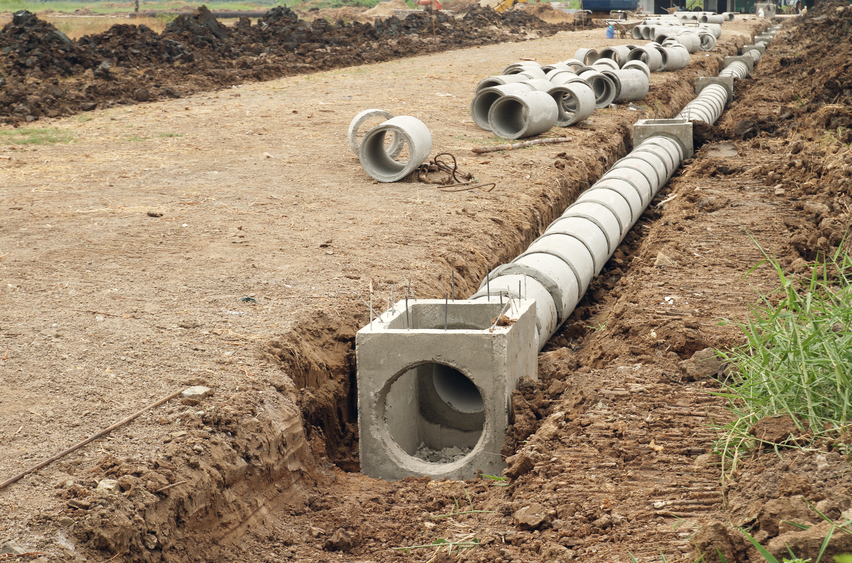Pavement Design 12 PDH Discount Package 1
An Introduction to Geotextiles in Pavement and Drainage Applications (C02-019)
An Introduction to Pavement Design in Seasonal Frost Conditions (C04-029)
An Introduction to Pavement Overlays (C02-046)
An Introduction to the Principles of Pavement Drainage (C02-048)

This online engineering PDH course provides an introduction to flexible pavement design. It is a basic treatment that will introduce designers to some important principles and terminology. In simple applications on real projects the information provided will give designers a good start in addressing subgrades, select materials and subbase courses, base courses and pavement design for flexible pavements for streets, roads and parking lots.
This 2 PDH online course is intended for engineers, architects and construction professionals who are interested in gaining a better understanding of flexible pavement design for streets, roads and parking areas. The course presents the basic terminology and technical considerations needed to help designers address flexible pavement design issues on specific projects.
This PE continuing education course is intended to provide you with the following specific knowledge and skills:
- Learn how to evaluate site and soil conditions.
- Learn about the California Bearing Ratio (CBR) and how it is used in pavement design.
- Learn how to evaluate traffic conditions and determine the Design Index.
- Learn how to design flexible pavement subgrades.
- Learn how to design flexible pavement select materials and subbase courses.
- Learn how to design flexible pavement base courses.
- Learn the design procedure for flexible pavement design.
In this professional engineering CEU course, you need to review the course document titled: "An Introduction to Flexible Pavement Design".
Upon successful completion of the quiz, print your Certificate of Completion instantly. (Note: if you are paying by check or money order, you will be able to print it after we receive your payment.) For your convenience, we will also email it to you. Please note that you can log in to your account at any time to access and print your Certificate of Completion.

This online engineering PDH course presents the different types of geotextiles including polypropylene, polyester, polyethylene, polyamide (nylon), polyvinylidene chloride, and fiberglass. It also discusses the physical properties of geotextiles as well as their design and construction methods, durability, functions, and applications with emphasis on two of their most important uses: applications in pavements and drainage design.
This 2 PDH online course is intended for engineers, designers and construction professionals who want to learn about the benefits and techniques for incorporating geotextiles into construction applications, including pavement and drainage structures.
This PE continuing education online is intended to provide you with the following specific knowledge and skills:
- Learning about the different types of geotextiles and how they are manufactured
- Learning the durability, functions and applications of geotextiles
- Learning about the use of geotextiles in pavement surface rehabilitation and reflective crack treatment
- Learning about how geotextiles are used for separation and reinforcement in pavement structures
- Learning the application of geotextiles in construction of drainage structures
- Learning the geotextile characteristics that influence drainage filter functions
In this professional engineering CEU course, you need to review the course document titled: "An Introduction to Geotextiles in Pavement and Drainage Applications".
Upon successful completion of the quiz, print your Certificate of Completion instantly. (Note: if you are paying by check or money order, you will be able to print it after we receive your payment.) For your convenience, we will also email it to you. Please note that you can log in to your account at any time to access and print your Certificate of Completion.

This online engineering PDH course provides introductory information about evaluation of soil conditions, selection of materials, and design methods for pavements in seasonal frost conditions. It presents criteria and procedures for the design and construction of pavements placed on subgrade or base course materials subject to seasonal frost action. The most prevalent modes of distress in pavements and their causes are listed.
The detrimental effects of frost action in subsurface materials are manifested by non-uniform heave of pavements during the winter and by loss of strength of affected soils during the ensuing thaw period. This is accompanied by a corresponding increase in damage accumulation and a more rapid rate of pavement deterioration during the period of weakening; other related detrimental effects of frost and low temperatures are possible loss of compaction, development of permanent roughness, restriction of drainage by the frozen strata, and cracking and deterioration of the pavement surface. Hazardous operating conditions, excessive maintenance, or pavement destruction may result.
This 4 PDH online course is intended for civil and geotechnical engineers and other design and construction professionals wanting to learn how to design rigid and flexible pavements where seasonal frost conditions exist.
This PE continuing education course is intended to provide you with the following specific knowledge and skills:
- Learning about frost, soil and pavement terminology applicable to seasonal frost design conditions
- Learning about bound bases and how they are employed in frost conditions
- Knowing the definitions of frost-susceptible soils
- Understanding how the design freezing index is determined and applied in design for seasonal frost
- Knowing how to design to accommodate varved clays
- Learning about the alternative methods of thickness design
- Knowing how to determine and apply the air freezing index
- Learning about the reduced subgrade strength design method
In this professional engineering CEU course, you need to review the course document titled, "An Introduction to Pavement Design in Seasonal Frost Conditions".
Upon successful completion of the quiz, print your Certificate of Completion instantly. (Note: if you are paying by check or money order, you will be able to print it after we receive your payment.) For your convenience, we will also email it to you. Please note that you can log in to your account at any time to access and print your Certificate of Completion.

This online engineering PDH course provides an introduction to the selection, application and design of plain and reinforced portland cement concrete and asphalt concrete pavement overlays for streets, roads, parking and open storage areas.
Normally, overlays of existing pavements are used to increase the load-carrying capacity of an existing pavement or to correct a defective surface condition on the existing pavement. Of these reasons, the first requires a structural design procedure for determining the thickness of overlay; whereas the second requires only a thickness of overlay sufficient to correct the surface condition, and no increase in load-carrying capacity is considered.
The design method for overlays included in this course determines the thickness required to increase load-carrying capacity. These methods have been developed from a series of full-scale accelerated traffic tests on various types of overlays and are, therefore, empirical. These methods determine the required thickness of overlay that, when placed on the existing pavement, will be equivalent in performance to the required design thickness of a new pavement placed on subgrade.
This 2 PDH online course is intended for civil engineers and other design and construction professionals seeking to learn how to design and apply flexible and rigid overlays to existing flexible, composite and rigid pavements.
This PE continuing education course is intended to provide you with the following specific knowledge and skills:
- Understanding the measures necessary to prepare existing pavement for overlay
- Knowing the three bond conditions when overlaying a rigid pavement with a rigid overlay
- Learning about the condition rating factors "C" for existing pavements to be overlaid
- Learning how to calculate the thickness of rigid overlays for rigid pavements
- Learning how to design a rigid overlay of an existing flexible pavement
- Learning how to design overlays for composite pavements
- Learning how to apply overlays to flexible pavements
In this professional engineering CEU course, you need to review the course document titled, "An Introduction to Pavement Overlays".
Upon successful completion of the quiz, print your Certificate of Completion instantly. (Note: if you are paying by check or money order, you will be able to print it after we receive your payment.) For your convenience, we will also email it to you. Please note that you can log in to your account at any time to access and print your Certificate of Completion.

This online engineering PDH course provides an introduction to the terminology, fundamentals and methodologies for the design of drainage features in pavements.
Water has a detrimental effect on pavement performance, primarily by either weakening subsurface materials or erosion of material by free water movement. For flexible pavements, the weakening of the base, subbase or subgrade when saturated with water is one of the main causes of pavement failures. In rigid pavement, free water trapped between the rigid concrete surface and an impermeable layer directly beneath the concrete, moves due to pressure caused by loadings.
This movement of water (referred to as pumping) erodes the subsurface material creating voids under the concrete surface. In frost areas, subsurface water will contribute to frost damage by heaving during freezing and loss of subgrade support during thawing. Poor subsurface drainage can also contribute to secondary damage such as 'D' cracking or swelling of subsurface materials.
This 2 PDH online course is intended for civil engineers and other design and construction professionals wanting an introduction to the principles of pavement drainage.
This PE continuing education course is intended to provide you with the following specific knowledge and skills:
- Learning about the effects of subsurface water
- Learning about the effects of infiltration and subterranean water
- Understanding how subdrainage facilities can be categorized into two functional categories, one to control infiltration, and one to control groundwater
- Understanding how flow of water through soils is expressed by Darcy's empirical law
- Understanding how the value of permeability depends on the characteristics of the permeable materials and the properties of the fluid
- Understanding how permeability is a function of a complex relationship with grain size
- Learning about the void ratio or porosity of soils, and its influence on permeability
- Learning why the type and condition of the pavement surface will have considerable influence on the volume of water entering the pavement structure
- Learning about pavement drainage in frost susceptible soils
Upon successful completion of the quiz, print your Certificate of Completion instantly. (Note: if you are paying by check or money order, you will be able to print it after we receive your payment.) For your convenience, we will also email it to you. Please note that you can log in to your account at any time to access and print your Certificate of Completion.